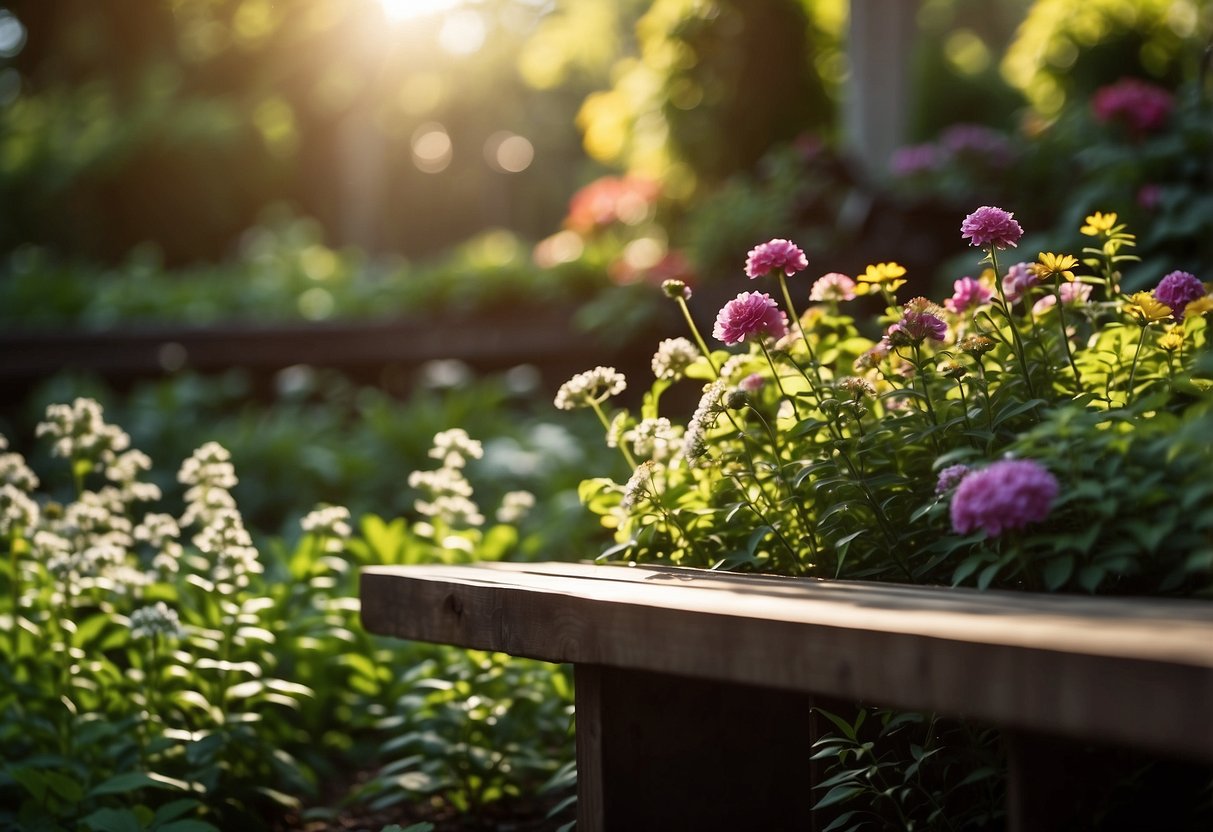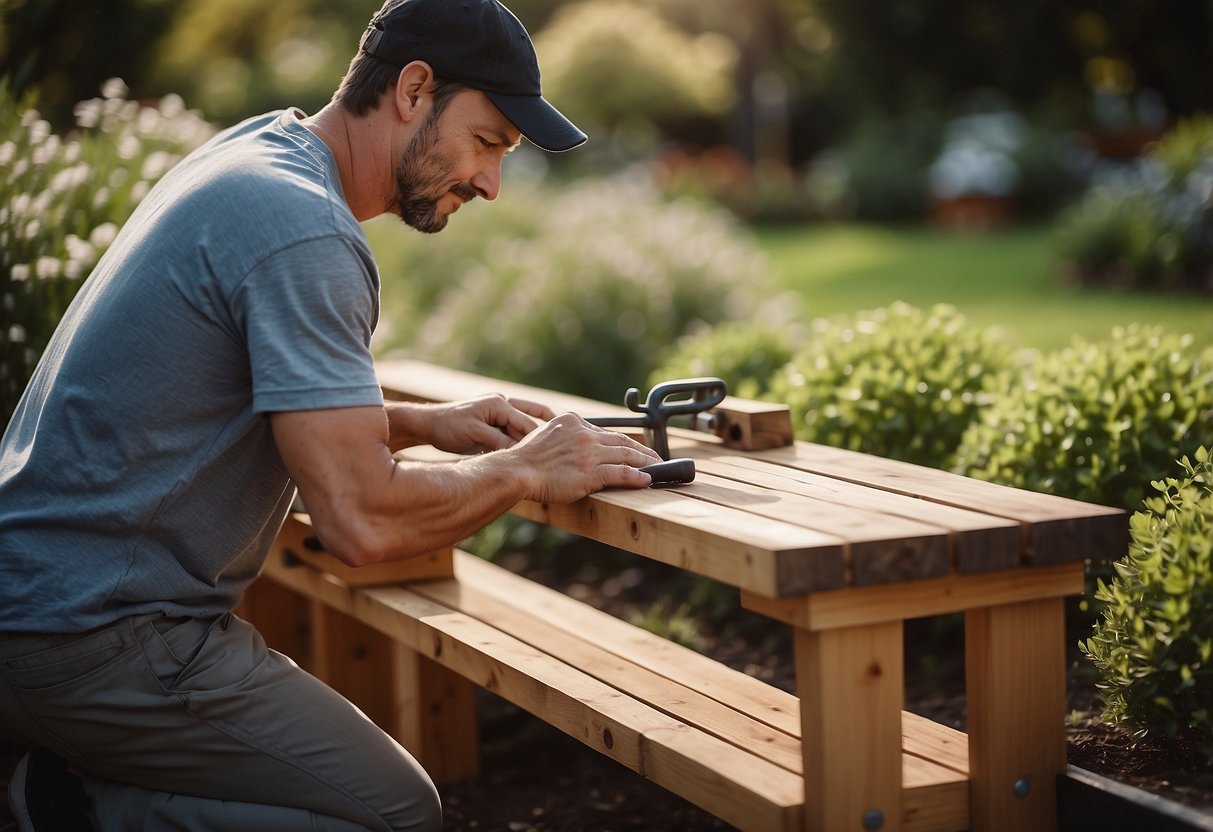Wood Garden Tips: Easy Ways to Beautify Your Green Space
Creating a wood garden can be an enjoyable and rewarding project for any homeowner. Whether you’re interested in adding natural beauty to your yard or providing a quiet retreat, a wood garden is the perfect way to enhance your outdoor space. Plus, working with wood elements brings a rustic charm that blends seamlessly with the environment.

You will discover the essential tips to bring your wood garden to life and maintain its beauty year-round. From choosing the right materials to basic DIY techniques, these wood garden tips will help you create a stunning and sustainable garden that you can enjoy for years to come. Embrace the tranquility of nature right in your own backyard.
1) Mulching with Cedar Chips

Cedar chips are a great choice for mulching your garden. They add a pleasant aroma and keep pests away. To use cedar mulch properly, spread it in a layer about 2-3 inches thick around your plants.
Cedar mulch helps retain soil moisture and regulates temperature. It also improves soil quality as it breaks down over time. Make sure to apply it evenly to avoid any issues.
Cedar mulch is perfect for pathways, under shrubs, or around trees. Not only does it look good, but it also protects your garden. Try using cedar mulch for a healthy and attractive garden landscape. For more details, visit here and here.
2) Building a Rustic Trellis

To build a rustic trellis, first pick straight branches. These branches are great for creating traditional shapes.
Use braces to connect parts of the frame. Eyeball the trellis to ensure it’s square.
For a sturdier trellis, use materials like wire or metal garden fencing. This approach will give you a durable structure for your garden.
More information can be found here.
3) Using Reclaimed Wood

Using reclaimed wood in your garden adds a unique touch. Reclaimed wood is strong and durable because it’s already dried and seasoned.
You can use reclaimed wood for retaining walls to hold soil and add texture. Try turning old wooden crates or pallets into decorative planters.
Before using reclaimed wood, remove any nails or screws with a metal detector to avoid accidents.
4) Creating a Wooden Garden Path

Creating a wooden garden path is a great way to add charm to your garden.
You can use wood chips, which are cost-effective and easy to spread. This type of path blends well with natural surroundings and provides a soft, rustic look.
Wooden planks or logs can also be used to create a more structured path, giving a neat and classic appearance to your garden.
5) Constructing Raised Beds

When constructing raised beds, begin with deciding on the size. A width of four feet allows you to reach the center easily from either side.
Choose sturdy materials like untreated wood, which are safe for growing vegetables.
Start by mowing the grass close to the ground and covering it with cardboard. This prevents weeds from growing up into your bed.
If you want easier access, a bed height of at least 12 inches can be great for older gardeners or those with back pain.
Fill your raised bed with a mix of topsoil and compost for the best growing results.
6) Installing Wooden Bench Seating

Adding wooden bench seating to your garden can create a cozy spot to relax. Start by cutting two 16-inch legs from a 2-by-12 board as suggested in this guide.
Next, cut the seat and stringer portions. Use screws to secure the seat safely. Make sure to place supports under the seat for stability, following the steps from MyOutdoorPlans. Happy building!
7) Crafting Wooden Planters

Creating your own wooden planters can be a fun and rewarding project. Start by choosing the right wood. Cedar is a great option because it resists rot and insects. Pine is also good but may need more maintenance.
Measure and cut the wood to your desired size. Make sure to drill holes at the ends of each piece to avoid splitting. Assemble the pieces with screws for a sturdy build.
After assembling, give your planter a treatment with a waterproof sealer. This helps protect the wood from moisture. For more ideas, check out these DIY wood planter tutorials.
8) Making Birdhouses with Wood

Making birdhouses with wood is a fun and rewarding project. Start by choosing the right wood. Pine is affordable and easy to work with, while cedar is durable. Use untreated lumber to keep birds safe.
Cut the wood into pieces. For example, cut a 1-foot by 6-foot pine or cedar board into specific dimensions.
Drill an entrance hole on the front panel. The hole size can vary depending on bird species, typically between 1 and 3 inches in diameter.
Assemble the birdhouse with nails or screws. Sand the edges to ensure they are smooth. Add a perch or leave it out if the species doesn’t need one. Your garden birds will thank you!
9) Repurposing Pallets for Vertical Gardens

Using pallets for vertical gardens is a smart and affordable idea.
Start by finding a sturdy wood pallet. It’s best to use untreated wood.
Next, attach landscape fabric to the back. This helps to keep the soil and plants in place.
Fill the pallet with soil and plant your favorite herbs or flowers.
For more ideas and inspiration, check out this article on upcycling pallets for vertical gardens.
10) Constructing a Potting Bench

Building a potting bench can make your gardening tasks easier and more organized. Start by choosing sturdy materials like cedar or treated wood. These options ensure your bench lasts longer outdoors.
Measure and cut your wood according to the plans you prefer, such as these free potting bench plans. Sand the edges to avoid splinters.
Assemble the frame, attaching the legs, shelves, and surface securely. Consider adding a hutch or a sink for added functionality, found in some detailed guides like the Bob Vila’s potting bench plans. Staining or painting the bench can give it a polished, weather-resistant finish.
Choosing the Right Wood

Picking the perfect wood for your garden projects can impact the health and appearance of your outdoor space. Various types of wood offer different benefits and drawbacks, and it’s essential to understand these to make the best choice.
Common Types of Wood for Gardens
Cedar is often chosen for gardens due to its natural resistance to rot and insects. Its pleasant aroma and reddish color enhance the garden’s aesthetics.
Redwood is another excellent option, known for its resistance to decay and rich, warm color. It’s lightweight and easy to work with.
Cypress wood is also popular for its durability and decay resistance. It’s a bit dense and can range in price based on quality.
Black Locust is a hardwood that stands out for its strength and durability. Though more expensive, it’s nearly rot-proof and suitable for long-lasting projects.
Pros and Cons of Different Wood Species
Cedar is rot-resistant and repels insects naturally. It’s relatively easy to cut and shape. The downside is its cost, which can be higher compared to other woods.
Redwood offers a beautiful appearance and excellent durability. It’s light but also one of the more expensive options, which might be a consideration for larger projects.
Cypress wood is very durable and naturally repels pests. It’s more affordable than redwood and cedar but can be challenging to find in certain areas.
Black Locust is incredibly durable and environmentally friendly since it doesn’t require treatment. The main con is its high cost and occasional difficulty finding it.
Treated vs. Untreated Wood
Treated wood is chemically processed to resist rot and insects. This makes it longer-lasting, especially for contact with soil and moisture. It’s essential to use treated wood labeled safe for gardens to avoid harmful chemicals leaching into the soil.
Untreated wood maintains a natural appearance and avoids chemicals. However, it’s more prone to decay and might need replacing sooner. Cedar and redwood are great untreated options due to their natural resistance properties.
Using the right type of wood can make a significant difference in your garden’s durability and appearance. Consider your specific needs and the characteristics of each wood type before making your choice.
Wood Maintenance Tips

Proper maintenance of wood in your garden involves protecting it from harsh weather, preventing rot, and keeping it clean and stained. By regularly caring for your wooden items, you can ensure they last longer and look great.
Protection from the Elements
Weather can cause significant damage to wooden furniture and garden structures. To protect wood from rain and sun, use weather-resistant covers or store items in a sheltered place during harsh weather.
Choose weather-resistant woods like teak or cedar for outdoor use.
Keep the wood sealed with a quality sealant or wood protector.
Apply sealant every year to maintain its protective qualities. Adding a layer of water-repellent preservative will also help.
Preventing Rot and Decay
Rot and decay are common issues with outdoor wood, especially in damp or shady areas. To prevent this, make sure the wood stays dry by not letting it sit directly on the ground.
Elevate furniture and structures slightly to allow air circulation underneath.
Use products that protect the wood from fungal growth. Applying a fungicide can also be beneficial. Regular inspections for signs of rot or insect damage will allow you to act quickly before the problem worsens.
Cleaning and Staining
Keeping your wooden items clean helps maintain their appearance and durability. Clean your wood furniture and decks at least once a year.
Use a mild detergent and a soft brush to scrub off dirt and mildew. For larger areas like decks, consider using a pressure washer, but be gentle to avoid damage.
Once clean, apply a stain or finish that includes UV protection to prevent sun damage. Regularly washing your deck and applying a protective coat can keep it looking fresh and prolong its life.
Staining also enhances the wood’s natural beauty and provides an extra layer of protection against the elements.







